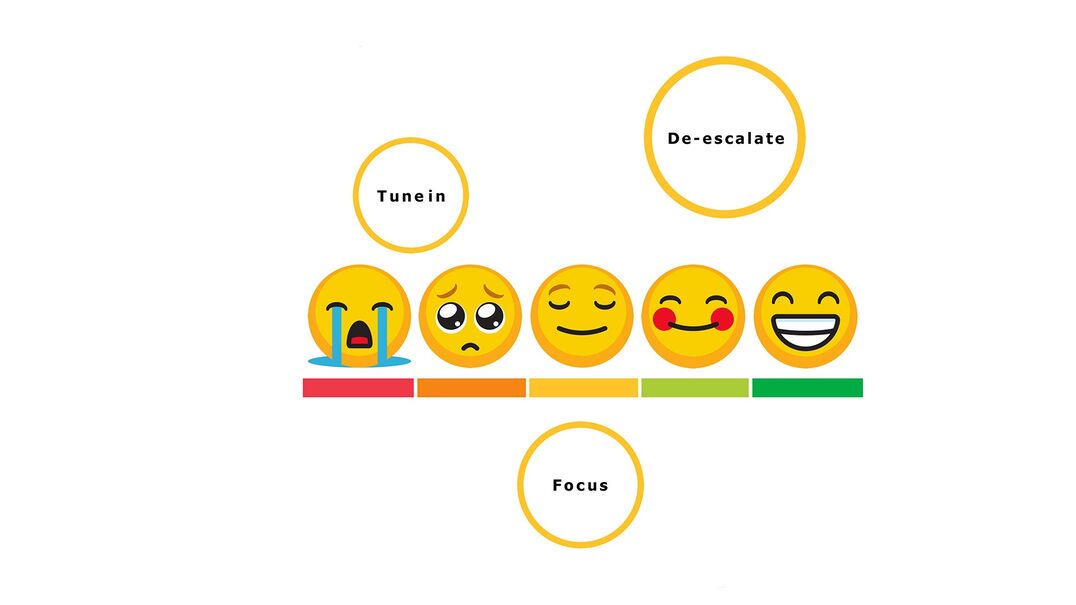This article was published by Motherpedia, September 2021
Home schooling has taught us that parenting and teaching are incredibly different. Now more than ever, as these roles merge, are the differences so pronounced. One of the first home schooling lessons that reverberated throughout locked down homes last year was that teaching is hard. So surprisingly hard we vowed it was a job we could never do. And here we are 18 months later, still trying to teach children who are as fatigued by it all as we are.
As the days of home schooling in Victoria have extended into our sixth lockdown, parents and carers are naturally concerned about their children’s education and the impact extended periods away from classrooms will have on them. This concern directly translates to pressure for parents and carers to prioritise teaching so their children stay academically afloat.
This is especially the case for primary school students—some of whom receive minimal direct instruction from their classroom teachers throughout the week. Limited face to face contact with teachers moves the onus on to parents and carers to be the primary teachers. Where schools are providing an outline of tasks to complete for the week without face to face instruction or opportunities to connect with other students, the onus is again on parents and carers to be teachers.
Many of our own children have told us that their teachers are better at teaching that we are. We could not agree more. And we readily acknowledge that parents are not trained teachers. We haven’t been given the tools or taught the skills to teach our children and we need this help.
In our daily work at Berry Street Victoria, we have the benefit of collaborating together in our wrap- around support of children and young people.
This means that working together, parents, carers and teachers are building insight for what can be most effective for at home learning in this uncertain time.
Here are three strategies that adults can action at home that teachers and teacher assistant do every day in the classroom.
Co-regulation when hitting a speed bump
Co-regulation helpfully describes when adults deliberately use verbal and non-verbal strategies to help children feel calm and centred. Learning new content, skills and strategies requires a dose of courage for children and young people to admit they have hit a speed bump. Learning is not smooth sailing. Teacher assistants are the staff members who are present in the classroom to proactively notice the early signs when students pause, start fidgeting, try—and sometimes fail at a task. While they are careful not to hover over a student’s shoulder, they also know that learning requires effective stress management.
We recommend that parents place priority on co-regulation at these times of uncertainty. No matter what else may have happened in the morning, children can know that when it’s time to learn, they have a fresh start at the top of each hour. Teacher assistants are always considering their own body language and body positioning (shoulder-to shoulder, side-to-side) to facilitate learning together instead of standing over students as if at the front of the classroom.
When children reach a speed bump of learning uncertainty or challenge, get down to their eye-level, take a deep breath and use lead-in prompts such as:
- You’ve made a strong start! Let’s take a breath and back up just one step.
- I see you’re managing a speed bump—that would be a challenge for the rest of the class too.
- Good on you! I just noticed that you paused, re-read the question and kept on going.
Notice how in each of these examples, the adult is describing the speed bump with empathy, validating what the child has done well, and suggesting that they can keep going by looking at each step, one at a time. We call it fix-it feedback to ensure that all of us benefit when we receive helpful feedback.
Another pro-tip when managing speed bumps: Teacher assistants are not bringing all of the errors on the page to the child’s attention at the same time. Rather, they are assessing which correction will be most beneficial as priority feedback for the child to practice once again.
This way, the child can be open to the correction because it feels bite sized. While it can be tempting to have children go back and correct all of their errors, focus on the patterns that you observe and select the error that represents the others, so bite-sized revision feels more possible to both of you.
Small moments of relational connection
Teacher assistants know that healthy classroom-based relationships with students are not the result of having time to walk each student around the oval; rather quite the opposite. Healthy relationships are formed with students in the small moments of interaction when learning. We are careful not to single out children in front of their peers or over-celebrate an accomplishment if we know that would embarrass them.
Instead, we are looking for small moments of relationship. Those small moments that can be found all day long when learning:
- A quick thumbs up when the child glances up.
- Pointing to an error on the page non-verbally with a wink.
- Using I notice statements such as “I noticed that you went back to check on that definition Cool!”
We know there are many times when parents are not able to check-in as much as they’d like when monitoring learning at home. Same goes for teacher assistants in the classroom. We recommend setting up little systems of communication like teacher assistants do such as:
- Using yellow sticky-notes to communicate back and forth, with children knowing that a short wait may be required before an adult will respond to the note
- Determining a special notebook that can be passed between adult and child to write fix-it feedback and messages of encouragement which can be particularly helpful if the adult is occupied with another task
- Having a stoplight system of cards wherein red card on top means I’ve hit a speed bump; yellow is I’d like a check in; and green is I’m smooth sailing right now.
Each one of these strategies can provide useful ways to communicate and build small moments of relational connection—without verbal conversation required. And each one of these strategies provides many opportunities to focus on what’s working well for your child.
Chunk-up the lesson
When designing an ambitious learning task in the classroom, teachers and their teaching assistant design the lesson in a way that provides numerous opportunities to focus—then have breaks to renew focus.
While acknowledging the many reasons that can make focus a premium resource within the classroom—even on the best of days—the teachers we support at Berry Street know that we need to increase the ability to focus on learning one minute at a time.
Success is not defined by maintaining focus for 60 minutes at a time. Rather, it’s the accumulation of five minutes—then another five minutes—until the job is done.
We use a visual timetable with each of the headings below as a visual anchor. It often helps students to help track where they are in the schedule, so they can anticipate the next step and also begin to take the reigns of monitoring their own learning success. (To note: the below represents a 45-minute period, but this can be adjusted to any length of time less than one hour).
Is a short moment to acknowledge that we are about to start the lesson. This may include time to clear off the table, set up the materials, ensure a water- bottle is nearby, and ask a quick question: “On a scale of 1 to 5, how ready are you to learn? And what can we do to ensure you have what you need to learn?”
Is what teachers and teacher assistants do to prime the body and brain for success. We deliberately want to boost positive emotion for better engagement and better memory to retain the knowledge and skills in the lesson. Effective positive primers can be watching a funny video clip that relates to the content, a challenge game of memory to guess vocabulary words, or a card game that builds number sense. Even a short, competitive game of Uno can help prime a child for the numeracy mindset they’ll need for the rest of the lesson.
Teachers know that they have limited time to explain the lesson and then—get off the stage! Children and young people have a limited capacity to listen to adults, so we suggest only to give directions or introduce new concepts in six to seven minutes, before letting them have a go.
Learning to focus is like learning how to run a race. You accomplish your goal by training one minute at a time. For some children, success is defined as five- sustained minutes of on task learning before they need a break. For others, 12-minutes on task represents success. Introduce your fair expectations by saying: “We’re going to get there one minute at a time.” We suggest setting clear goals at first, write down those goals in the visual timetable and then celebrate that period of learning stamina. Eventually, support the goal setting of your children to set a new stamina goal each day, based on their prior record of building stamina for learning.
Everyone needs a break to renew their focus. Even high schoolers who are deep in concentration for 20 minutes at a time need a break to take a breath, shrug their shoulders, hydrate, and then get back to learning for the next 20 minutes. All children and young people benefit when they are given opportunities to move their bodies during a brain break. We suggest star-jumps (that you can also track and celebrate on the visual timetable), getting active in the kitchen as you make preparation for the next snack or meal, or even listening to a favourite song before heading back to the task.
After their brain break, agree on the next goal to deep dive back into the learning task at hand. Again, celebrate the small increments to build of their learning stamina for independent work.
Our WWW routine helps us capitalise on what went well for this session. It’s insurance that both child and adult focus on the strengths being shown—even if there were moments of rupture or speed bumps in learning. This can sound like prompting such as: “Before we move on to our next subject, let’s identify WWW. I noticed that you definitely persisted today when you were unsure of your initial answers. You also beat me at the card-game to start. That definitely worked well for you! What’s your WWW?”
We hope that by practising these strategies of co-regulation, small moments of relational connection and chunking-up the lesson, you’ll increase your on the job training as a teacher assistant at home. Remember, it’s not the big moments that count when learning, it’s the small ones. Even if the prior day was a challenge, our children wake up with high-hopes that the next day will be a new one—and a fresh start to activate the strengths of curiosity and persistence to keep moving forward.

Dr Tom Brunzell
PhD, University of Melbourne | Master of Education (School Leadership) | Master of Science (Teaching) | Bachelor of Arts

Jodie White
MCommDev, GradCertCouns, BSW



